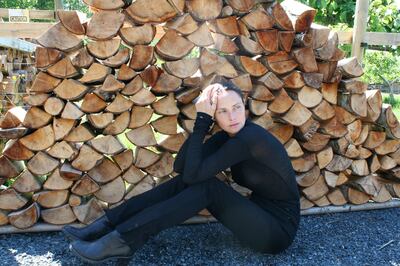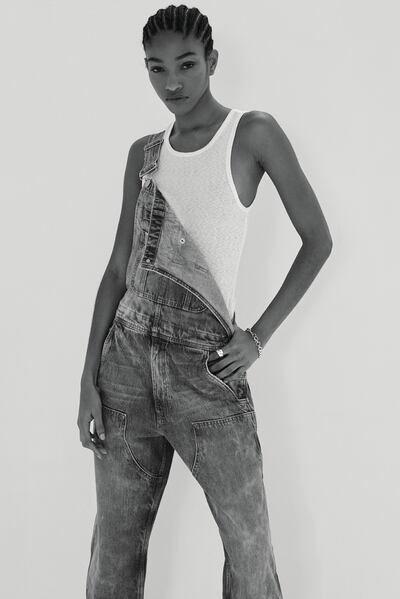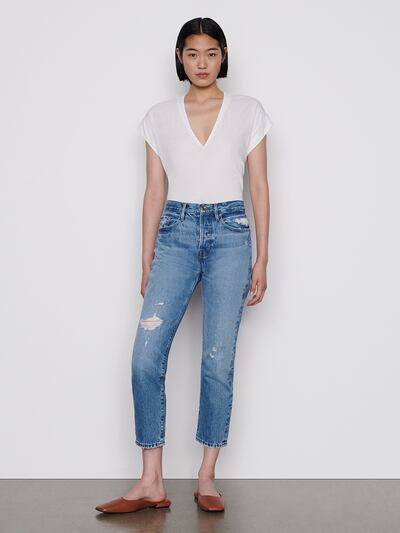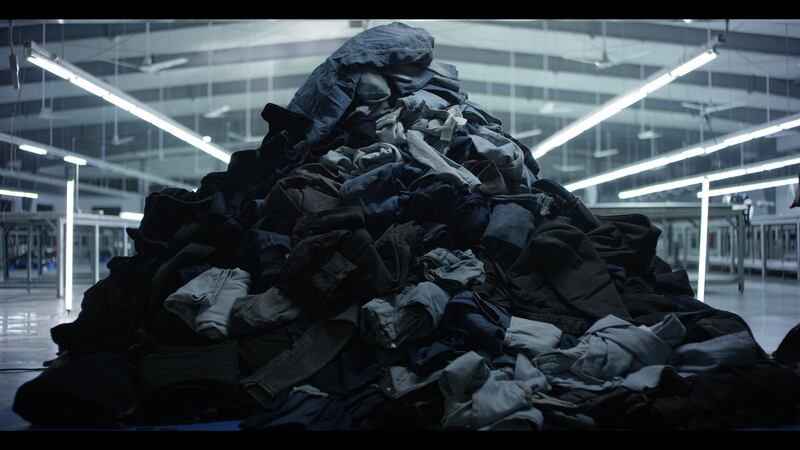It is a shocking and sad fact that 64 per cent of all 32 billion garments produced globally each year end up in landfill. About 94 million kilograms worth of single-use outfits are bought annually, with one in two people throwing unwanted clothes directly into the bin instead of reselling them or repurposing them.
Discarded garments piled singly on top of each other would reach the height of Burj Khalifa within 42 seconds, Mount Everest in seven minutes and the Moon (384,400 kilometres away) in 228 days. Meanwhile, man-made fabrics such as polyester and nylon can take up to 200 years to break down in landfill, whereas linen takes only two weeks to disintegrate naturally.
It is therefore little wonder that sustainability has become a hot topic both in terms of wastage and environmental impact: the fashion and textile industry is cited as the joint third-highest emitter of greenhouse gases globally.
Initially, fashion brands were slow to react, but things are changing. One area of the fashion industry where this has been noticeable is denim, because the key staple of all our wardrobes, a pair of jeans, comes with a significant environmental cost.

Denim production has had a poor reputation for decades due to the enormous quantity of water required for processing; the harmful chemicals in the treatment and dyeing processes that provide all those interesting bleached, stonewashed and sandblasted finishes; and the amount of water and pesticides required for large-scale cotton cultivation.
Making jeans is a thirsty process. According to Sarah Ahmed, founder of New York denim brand DL1961, a pair of jeans requires about 6,800 litres of water, from growing the cotton crop through to processing the finished garment.
Thankfully, there are a host of denim brands embracing new eco-friendly approaches. There are newer players such as DL1961, Frame, Everlane, ELV Denim, Reformation and Re/Done, as well as established global names such as Levi Strauss & Co. However, they cannot do this alone. It must be a collaborative process between the brands and the huge mills that weave kilometres of denim cloth for them each year.
Initiatives undertaken by this new breed of denim makers include the use of recycled yarn, utilising a technology developed by RecoverTM, a material sciences company that transforms post-consumer waste into new yarn. Using pre-loved cottons and knitwear, DL1961’s denim creates a more circular manufacturing process, explains Ms Ahmed.
“To put it simply, those jeans you threw out last year or that tube top that you wore every day in college have been broken down, woven into a brand new cotton fibre, and now have a new life as part of your favourite pair of jeans.”
Sustainability has been at the brand’s core since inception, and it prides itself on exploring new initiatives in fabric and sustainability technologies. “Our customers have always appreciated our sustainability, but it has become a much more frequently asked question in the past two years,” Ahmed explains. “It’s nice to see the general market sentiment shifting to demanding more from fashion brands and manufacturers. It inspires us to innovate even further.”
Ahmed’s family owns the second-largest denim mill in Pakistan, ADM, which was founded in 1993 and weaves 2.7km of denim per month. It is a vertical operation producing one million pairs of jeans a month, from high-rise kick flares to classic straight cuts, not just for DL1961, but other brands as well. The denim is made using sustainable fibres such as RecoverTM (post-consumer waste that ADM has recycled) woven with high-tech TencelTM, which is the cellulose yarn similarly recycled and also biodegradable that gives the recycled cotton its strength.

Using this and employing a fraction of the water, dyes and energy (ADM uses solar power) does not mean a compromised product for the consumer. “Most people are surprised that denim that feels so comfortable and fits so well is sustainable, but we are committed to best practices for our customers and our planet,” says Ahmed.
ISKO in Turkey is one of the world’s largest producers of denim fabric, weaving 300 million metres of fabric per year on 2,000 state-of-the-art looms and supplying a host of European designer brands and smaller denim and designer labels such as NTMB, Filles a Papa, BITE Studios and Bianca Saunders.
ISKO is best known for launching jeggings, a luxury stretch denim with secondskin fit and shaping properties, 12 years ago. And the mill is committed to developing an integrated field-to-fabric approach in every step of its chain. This has been recognised and awarded by the EU Ecolabel award, which, explains Keith O’Brien, ISKO’s senior PR manager, is “due to our commitment to product and process innovation, as well as our environmentally friendly and socially responsible products. We do this because it is the right thing to do – we have complete transparency with all our customers".
ISKO’s latest evolution in its responsible innovation programme is R-TWOTM 50+ sustainable denim, which is made with at least 50 per cent recycled materials – in particular, cotton that would normally be lost in the spinning process. Aside from recycled cotton, there is recycled polyester that is made from plastic bottles. The company has also drastically reduced the amount of water needed in the manufacture of its denim, with the aim of reusing and recycling all process water by 2025.

The most famous brand in denim, Levi Strauss, which was founded 170 years ago, is heavily invested in creating a circular ecosystem for its jeans marketed under the Buy Better, Wear Longer campaign, which launched in 2020. Doubling down on its investment in sustainability, Levi Strauss has developed a new fibre for its 501s that contains organic cotton, sustainably sourced wood pulp and fibre spun from discarded denim.
It also uses cottonised hemp and recycled fibres across the rest of its fashion garments. Meanwhile, its ongoing Water<Less initiative aims to drastically reduce the amount of water used in the production of its jeans as well as detoxing hazardous and polluting chemicals.
Smaller brands have found other ways to produce eco-friendly jeans, such as ELV Denim in London, which uses 100 per cent upcycled denim with new designs structured from pre-loved jeans. Re/Done, a brand from Los Angeles, similarly uses upcycled denim, together with more eco-friendly materials such as organic cotton. Meanwhile, Everlane’s denim collection works with Saitex, a facility that recycles 98 per cent of its water, relies on alternative energy sources and repurposes by-products to create premium jeans.
American fashion brand Frame works with partners such as Saitex and Italian mill Candiani on two special initiatives: the (Bio) Degradable Jean and Pure, a capsule collection launched this spring featuring designs that use virtually no water in their production – a mere 1.25 litres, of which 98 per cent is recycled – and no bleach or stonewashing.

As Erik Torstensson, co-founder and CEO of Frame, says: “Conserving water, and as a result saving energy, is yet another step on this path we are taking to not only produce sustainably and responsibly, but also continuously strive to be better global citizens.”
Three new fabrics have been created for Frame’s (Bio) Degradable Jean, with different levels of stretch. They all feature biodegradable cotton that decomposes naturally, and hardware that is easily removable, with an explanatory QR code attached to explain how and where.
The collection, says Torstensson, “has been incredibly well-received and has been rolled out for many seasons to come". He adds: "We have found a formula that doesn’t compromise Frame’s aesthetic and fit, and has less impact on the environment. We are committed to making luxury denim better, so we will continue to research and create products in this way.”
Ultimately, the brand’s customers want to buy better. “They want to look good, but do good at the same time,” he says.






